
Haworthia is a large genus of small succulent plants endemic to Southern Africa (Mozambique, Namibia, Lesotho, Eswatini and South Africa).

Gasteria is a genus of succulent plants, native to South Africa and the far south-west corner of Namibia.
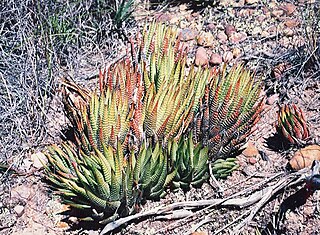
Haworthiopsis fasciata, formerly Haworthia fasciata, is a species of succulent plant from the Eastern Cape Province, South Africa. The species is rare in cultivation; most plants that are labelled as H. fasciata are actually Haworthiopsis attenuata.

Haworthia cymbiformis is a species of the genus Haworthia in the family Asphodelaceae, endemic to the Eastern Cape Province in South Africa.

Haworthia truncata, locally known as horse's teeth, is a species of succulent plant in the genus Haworthia. It is found in the Little Karoo region, in the far east of the Western Cape Province, South Africa.

Haworthia magnifica is a species of the genus Haworthia belonging to the family Asphodelaceae.

Haworthia mirabilis is a species of the genus Haworthia belonging to the family Asphodelaceae.

Tulista is a small genus of succulent plants endemic to the Cape Provinces of South Africa. They were formerly included within the genus Haworthia.

Haworthia cooperi is a diverse and varied species of the genus Haworthia in the family Asphodelaceae, endemic to the Eastern Cape Province in South Africa.
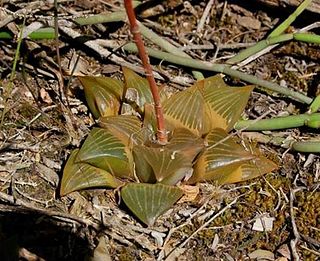
Haworthia retusa is a species of flowering plants of the genus Haworthia in the family Asphodelaceae, endemic to a very small area around Riversdale, in the Western Cape Province in South Africa. Growing to 10 cm (3.9 in) tall and broad, it is a perennial succulent with thick triangular leaves and small white tubular flowers held in 50 cm (20 in) tall racemes.

Haworthia mucronata is a species of the genus Haworthia in the family Asphodelaceae, endemic to the Little Karoo region, in the Western Cape Province of South Africa.

Gasteria carinata is a small and variable succulent plant, native to the Western Cape Province, South Africa.

Haworthia pygmaea is a species of the genus Haworthia in the family Asphodelaceae, endemic to the Mossel Bay area of the Western Cape, South Africa.
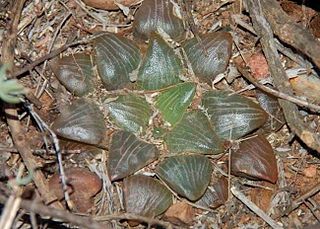
Haworthia bayeri is a species of the genus Haworthia in the family Asphodelaceae, endemic to the southern Cape Provinces in South Africa.
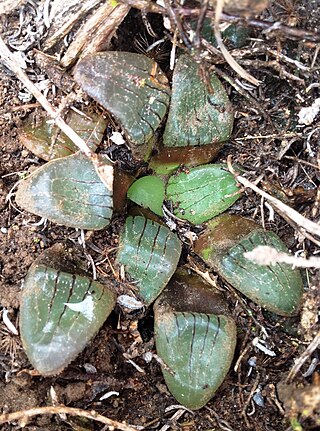
Haworthia springbokvlakensis is a species of the genus Haworthia in the family Asphodelaceae, endemic to a very restricted area of the Eastern Cape Province in South Africa.

Haworthia zantneriana is a species of the genus Haworthia in the family Asphodelaceae, subfamily Asphodeloideae, endemic to the southern parts of the Western Cape and Eastern Cape Provinces in South Africa.

Haworthiopsis bruynsii, formerly Haworthia bruynsii, is a rare species of the genus Haworthiopsis in the family Asphodelaceae, endemic to a small area in the Eastern Cape Provinces in South Africa.

Tulista pumila ("Vratjiesaalwee") is a species of Tulista succulent plant, from the Western Cape, South Africa.
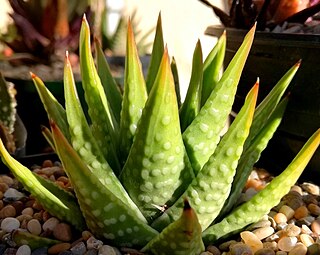
Tulista kingiana is a species of succulent plant, from the Western Cape, South Africa. It is listed as Endangered on the IUCN global Red List.
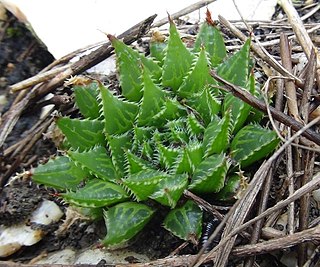
Haworthia rossouwii is a species of succulent plant belonging to the genus Haworthia and is classified under the family Asphodelaceae. It is native to Southern Africa, in the Overberg region of the Western Cape Province.





















